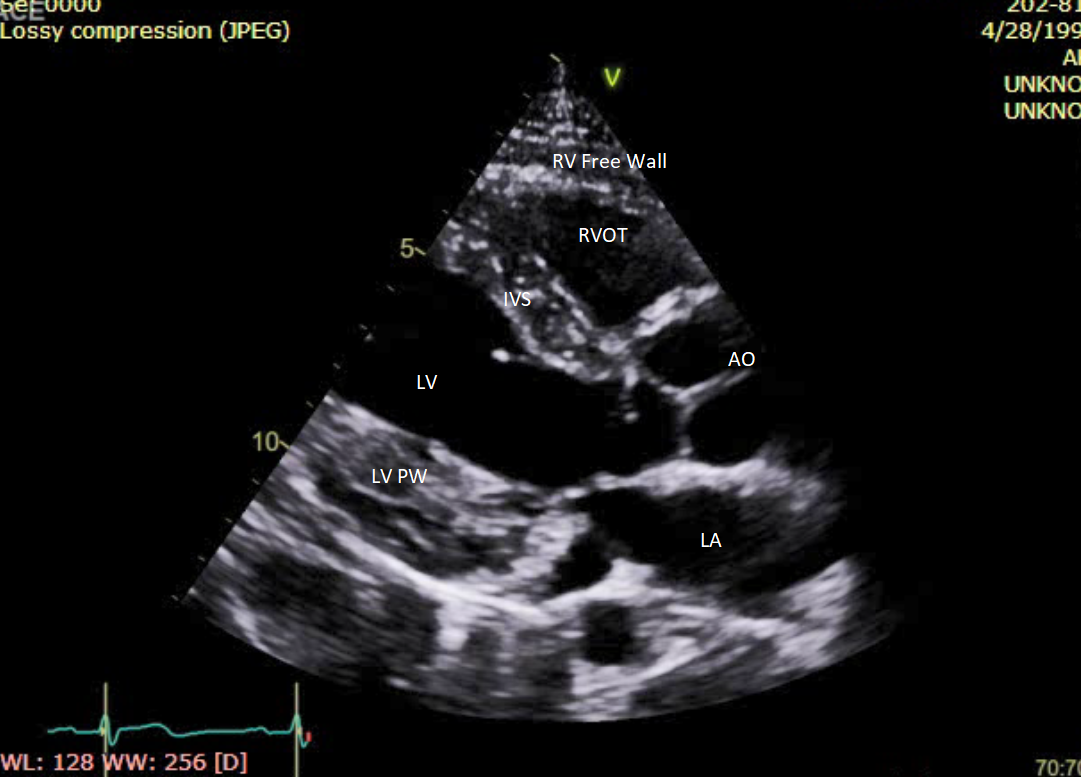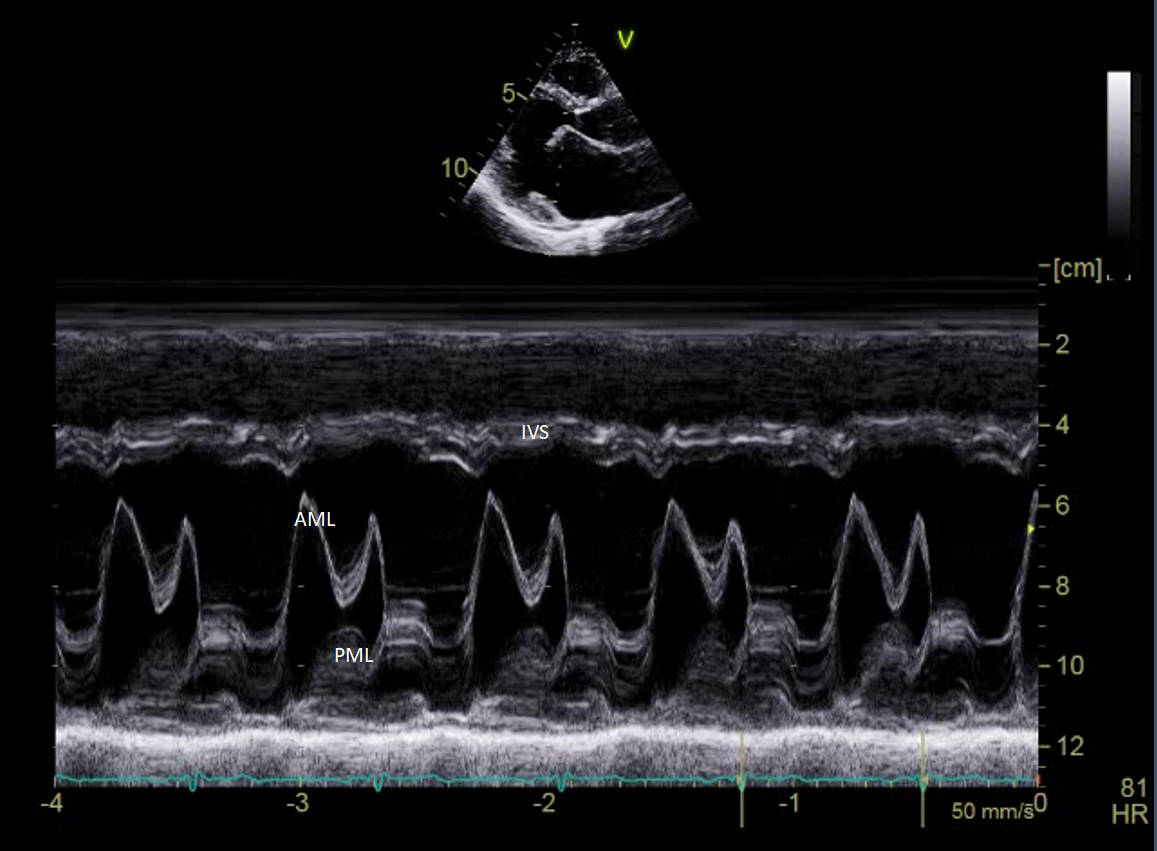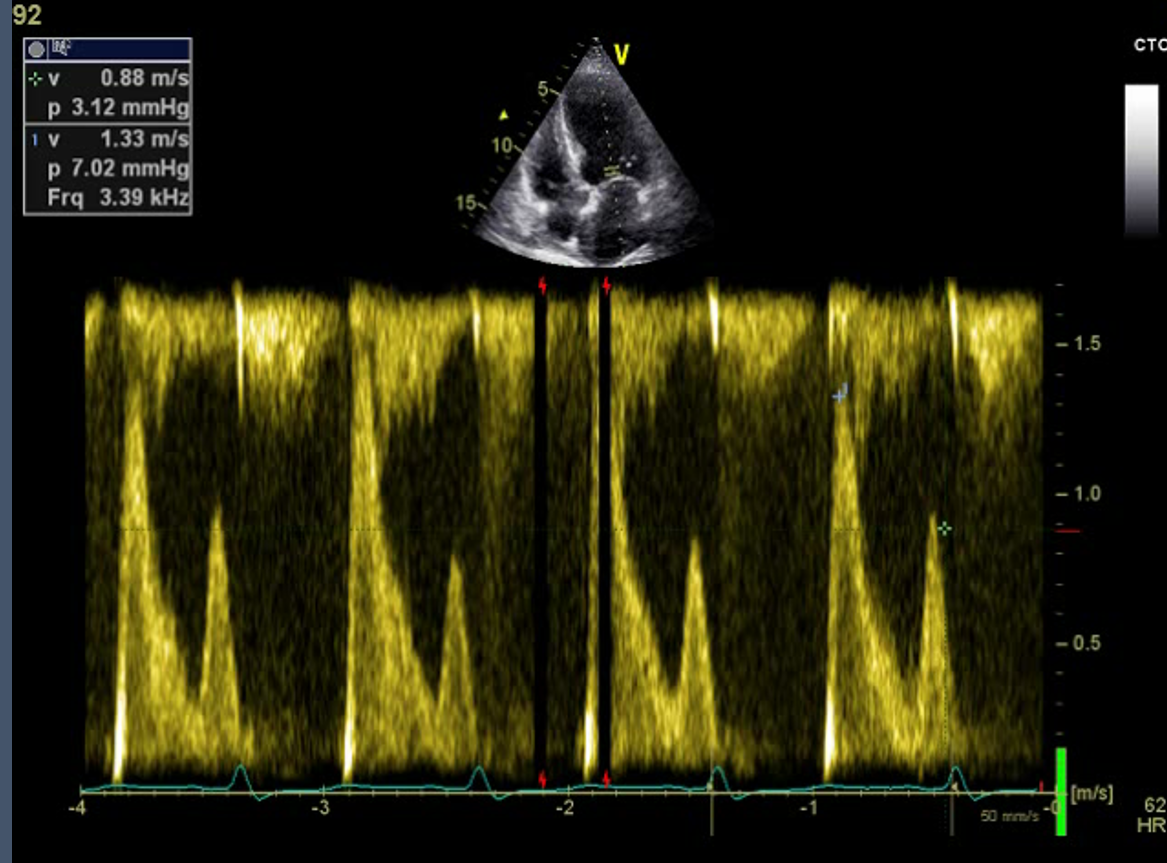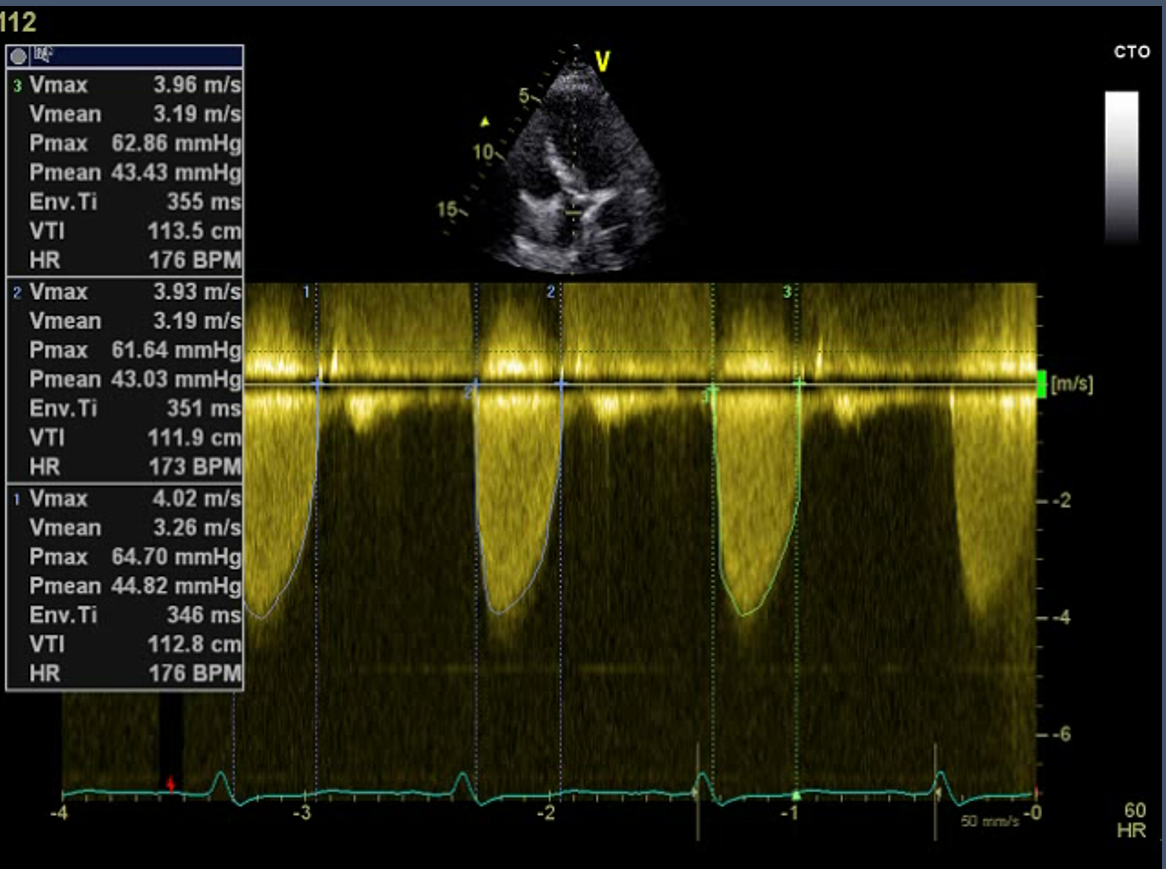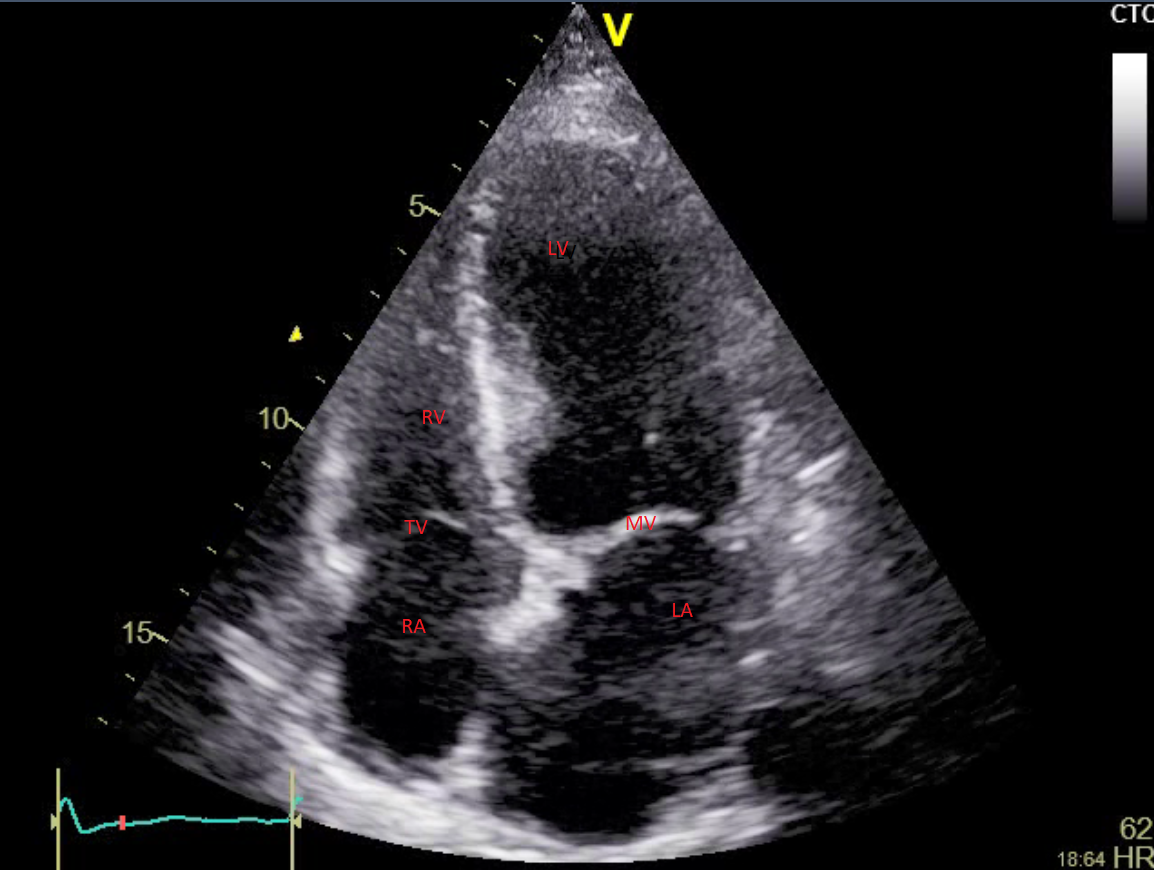[1]
Singh S, Goyal A. The origin of echocardiography: a tribute to Inge Edler. Texas Heart Institute journal. 2007:34(4):431-8
[PubMed PMID: 18172524]
[2]
Edler I, Hertz CH. The use of ultrasonic reflectoscope for the continuous recording of the movements of heart walls. 1954. Clinical physiology and functional imaging. 2004 May:24(3):118-36
[PubMed PMID: 15165281]
[3]
Mintz GS, Kotler MN, Parry WR, Segal BL. Statistical comparison of M mode and two dimensional echocardiographic diagnosis of flail mitral leaflets. The American journal of cardiology. 1980 Feb:45(2):253-9
[PubMed PMID: 7355735]
[4]
Bom N,van der Steen AF,de Jong N,Roelandt JR, Early, recent and future applications of echocardiography. Clinical physiology and functional imaging. 2004 May;
[PubMed PMID: 15165283]
[5]
Coman IM, Popescu BA. Shigeo Satomura: 60 years of Doppler ultrasound in medicine. Cardiovascular ultrasound. 2015 Dec 23:13():48. doi: 10.1186/s12947-015-0042-3. Epub 2015 Dec 23
[PubMed PMID: 26699126]
[6]
Li X, Ashraf M, Thiele K, Bhat AH, Sakaguchi R, Mitchell JC, Brie JA, Young M, Bader RS, Pemberton J, Sahn DJ. A novel method for the assessment of the accuracy of computing laminar flow stroke volumes using a real-time 3D ultrasound system: In vitro studies. European journal of echocardiography : the journal of the Working Group on Echocardiography of the European Society of Cardiology. 2005 Dec:6(6):396-404
[PubMed PMID: 15927537]
[7]
Karagodin I, Genovese D, Kruse E, Patel AR, Rashedi N, Lang RM, Mor-Avi V. Contrast-enhanced echocardiographic measurement of longitudinal strain: accuracy and its relationship with image quality. The international journal of cardiovascular imaging. 2020 Mar:36(3):431-439. doi: 10.1007/s10554-019-01732-4. Epub 2019 Nov 13
[PubMed PMID: 31720940]
Level 2 (mid-level) evidence
[8]
Han JC,Zhang HB,Gao S,Yu SM,Han J,Meng X,He YH, [Evaluation of the intraoperative transesophageal echocardiography for the aortic valve reconstruction]. Zhonghua yi xue za zhi. 2018 Oct 16;
[PubMed PMID: 30392264]
[9]
Anderson RH, Razavi R, Taylor AM. Cardiac anatomy revisited. Journal of anatomy. 2004 Sep:205(3):159-77
[PubMed PMID: 15379923]
[10]
Holmes JH. Diagnostic ultrasound during the early years of A.I.U.M. Journal of clinical ultrasound : JCU. 1980 Aug:8(4):299-308
[PubMed PMID: 6772678]
[11]
Krishnamoorthy VK, Sengupta PP, Gentile F, Khandheria BK. History of echocardiography and its future applications in medicine. Critical care medicine. 2007 Aug:35(8 Suppl):S309-13
[PubMed PMID: 17667454]
[12]
American College of Cardiology Foundation Appropriate Use Criteria Task Force.,American Society of Echocardiography.,American Heart Association.,American Society of Nuclear Cardiology.,Heart Failure Society of America.,Heart Rhythm Society.,Society for Cardiovascular Angiography and Interventions.,Society of Critical Care Medicine.,Society of Cardiovascular Computed Tomography.,Society for Cardiovascular Magnetic Resonance.,American College of Chest Physicians.,Douglas PS,Garcia MJ,Haines DE,Lai WW,Manning WJ,Patel AR,Picard MH,Polk DM,Ragosta M,Parker Ward R,Weiner RB, ACCF/ASE/AHA/ASNC/HFSA/HRS/SCAI/SCCM/SCCT/SCMR 2011 Appropriate Use Criteria for Echocardiography. A Report of the American College of Cardiology Foundation Appropriate Use Criteria Task Force, American Society of Echocardiography, American Heart Association, American Society of Nuclear Cardiology, Heart Failure Society of America, Heart Rhythm Society, Society for Cardiovascular Angiography and Interventions, Society of Critical Care Medicine, Society of Cardiovascular Computed Tomography, Society for Cardiovascular Magnetic Resonance American College of Chest Physicians. Journal of the American Society of Echocardiography : official publication of the American Society of Echocardiography. 2011 Mar;
[PubMed PMID: 21338862]
[13]
Doherty JU, Kort S, Mehran R, Schoenhagen P, Soman P, Dehmer GJ, Doherty JU, Schoenhagen P, Amin Z, Bashore TM, Boyle A, Calnon DA, Carabello B, Cerqueira MD, Conte J, Desai M, Edmundowicz D, Ferrari VA, Ghoshhajra B, Mehrotra P, Nazarian S, Reece TB, Tamarappoo B, Tzou WS, Wong JB, Doherty JU, Dehmer GJ, Bailey SR, Bhave NM, Brown AS, Daugherty SL, Dean LS, Desai MY, Duvernoy CS, Gillam LD, Hendel RC, Kramer CM, Lindsay BD, Manning WJ, Mehrotra P, Patel MR, Sachdeva R, Wann LS, Winchester DE, Wolk MJ, Allen JM. ACC/AATS/AHA/ASE/ASNC/HRS/SCAI/SCCT/SCMR/STS 2017 Appropriate Use Criteria for Multimodality Imaging in Valvular Heart Disease: A Report of the American College of Cardiology Appropriate Use Criteria Task Force, American Association for Thoracic Surgery, American Heart Association, American Society of Echocardiography, American Society of Nuclear Cardiology, Heart Rhythm Society, Society for Cardiovascular Angiography and Interventions, Society of Cardiovascular Computed Tomography, Society for Cardiovascular Magnetic Resonance, and Society of Thoracic Surgeons. Journal of the American Society of Echocardiography : official publication of the American Society of Echocardiography. 2018 Apr:31(4):381-404. doi: 10.1016/j.echo.2017.08.012. Epub 2017 Oct 20
[PubMed PMID: 29066081]
[14]
Writing Group Members, Doherty JU, Kort S, Mehran R, Schoenhagen P, Soman P, Rating Panel Members, Dehmer GJ, Doherty JU, Schoenhagen P, Bashore TM, Bhave NM, Calnon DA, Carabello B, Conte J, Dickfeld T, Edmundowicz D, Ferrari VA, Hall ME, Ghoshhajra B, Mehrotra P, Naqvi TZ, Reece TB, Starling RC, Szerlip M, Tzou WS, Wong JB, Appropriate Use Criteria Task Force, Doherty JU, Dehmer GJ, Bailey SR, Bhave NM, Brown AS, Daugherty SL, Dean LS, Desai MY, Duvernoy CS, Gillam LD, Hendel RC, Kramer CM, Lindsay BD, Manning WJ, Patel MR, Sachdeva R, Wann LS, Winchester DE, Wolk MJ. ACC/AATS/AHA/ASE/ASNC/HRS/SCAI/SCCT/SCMR/STS 2019 Appropriate Use Criteria for Multimodality Imaging in the Assessment of Cardiac Structure and Function in Nonvalvular Heart Disease: A Report of the American College of Cardiology Appropriate Use Criteria Task Force, American Association for Thoracic Surgery, American Heart Association, American Society of Echocardiography, American Society of Nuclear Cardiology, Heart Rhythm Society, Society for Cardiovascular Angiography and Interventions, Society of Cardiovascular Computed Tomography, Society for Cardiovascular Magnetic Resonance, and the Society of Thoracic Surgeons. Journal of the American Society of Echocardiography : official publication of the American Society of Echocardiography. 2019 May:32(5):553-579. doi: 10.1016/j.echo.2019.01.008. Epub 2019 Feb 7
[PubMed PMID: 30744922]
[15]
Hilberath JN, Oakes DA, Shernan SK, Bulwer BE, D'Ambra MN, Eltzschig HK. Safety of transesophageal echocardiography. Journal of the American Society of Echocardiography : official publication of the American Society of Echocardiography. 2010 Nov:23(11):1115-27; quiz 1220-1. doi: 10.1016/j.echo.2010.08.013. Epub
[PubMed PMID: 20864313]
[16]
Mitchell C,Rahko PS,Blauwet LA,Canaday B,Finstuen JA,Foster MC,Horton K,Ogunyankin KO,Palma RA,Velazquez EJ, Guidelines for Performing a Comprehensive Transthoracic Echocardiographic Examination in Adults: Recommendations from the American Society of Echocardiography. Journal of the American Society of Echocardiography : official publication of the American Society of Echocardiography. 2019 Jan;
[PubMed PMID: 30282592]
[17]
Feigenbaum H. Role of M-mode technique in today's echocardiography. Journal of the American Society of Echocardiography : official publication of the American Society of Echocardiography. 2010 Mar:23(3):240-57; 335-7. doi: 10.1016/j.echo.2010.01.015. Epub
[PubMed PMID: 20206828]
[18]
Kühl HP, Hanrath P, Franke A. M-mode echocardiography overestimates left ventricular mass in patients with normal left ventricular shape: a comparative study using three-dimensional echocardiography. European journal of echocardiography : the journal of the Working Group on Echocardiography of the European Society of Cardiology. 2003 Dec:4(4):312-9
[PubMed PMID: 14611828]
Level 2 (mid-level) evidence
[22]
Mao YK, Zhao BW, Zhou L, Wang B, Chen R, Wang SS. Z-score reference ranges for pulsed-wave Doppler indices of the cardiac outflow tracts in normal fetuses. The international journal of cardiovascular imaging. 2019 May:35(5):811-825. doi: 10.1007/s10554-018-01517-1. Epub 2019 Jan 8
[PubMed PMID: 30623353]
[23]
Bolger AF, Eidenvall L, Ask P, Loyd D, Wranne B. Understanding continuous-wave Doppler signal intensity as a measure of regurgitant severity. Journal of the American Society of Echocardiography : official publication of the American Society of Echocardiography. 1997 Jul-Aug:10(6):613-22
[PubMed PMID: 9282351]
Level 3 (low-level) evidence
[24]
Mowers KL,Fullerton JB,Hicks D,Singh GK,Johnson MC,Anwar S, 3D Echocardiography Provides Highly Accurate 3D Printed Models in Congenital Heart Disease. Pediatric cardiology. 2021 Jan;
[PubMed PMID: 33083888]
[25]
Lakatos BK, Tokodi M, Kispál E, Merkely B, Kovács A. Morphological and Functional Assessment of the Right Ventricle Using 3D Echocardiography. Journal of visualized experiments : JoVE. 2020 Oct 28:(164):. doi: 10.3791/61214. Epub 2020 Oct 28
[PubMed PMID: 33191942]
[26]
Sugimoto T, Dulgheru R, Marchetta S, Ilardi F, Contu L, Go YY, Lancellotti P. What Does 3D Echocardiography Add to 2D Echocardiography in the Assessment of Mitral Regurgitation? Current cardiology reports. 2017 Aug 24:19(10):90. doi: 10.1007/s11886-017-0901-7. Epub 2017 Aug 24
[PubMed PMID: 28840567]
[27]
Remenyi B, Davis K, Draper A, Bayley N, Paratz E, Reeves B, Appelbe A, Wheaton G, da Silva Almeida IT, Dos Santos J, Carapetis J, Francis JR. Single Parasternal-Long-Axis-View-Sweep Screening Echocardiographic Protocol to Detect Rheumatic Heart Disease: A Prospective Study of Diagnostic Accuracy. Heart, lung & circulation. 2020 Jun:29(6):859-866. doi: 10.1016/j.hlc.2019.02.196. Epub 2019 Jun 11
[PubMed PMID: 31320258]
[28]
Denault AY,Langevin S,Lessard MR,Courval JF,Desjardins G, Transthoracic echocardiographic evaluation of the heart and great vessels. Canadian journal of anaesthesia = Journal canadien d'anesthesie. 2018 Apr;
[PubMed PMID: 29352414]
[29]
Flower L, Madhivathanan PR, Andorka M, Olusanya O, Roshdy A, Sanfilippo F. Getting the most from the subcostal view: The rescue window for intensivists. Journal of critical care. 2021 Jun:63():202-210. doi: 10.1016/j.jcrc.2020.09.003. Epub 2020 Sep 13
[PubMed PMID: 32958350]
[30]
Zhang XY, Cao TS, Yuan LJ, Liu J, Duan YY. Value of the echocardiographic suprasternal view for diagnosis of patent ductus arteriosus subtypes. Journal of ultrasound in medicine : official journal of the American Institute of Ultrasound in Medicine. 2012 Sep:31(9):1421-7
[PubMed PMID: 22922622]
[31]
Hahn RT, Abraham T, Adams MS, Bruce CJ, Glas KE, Lang RM, Reeves ST, Shanewise JS, Siu SC, Stewart W, Picard MH. Guidelines for performing a comprehensive transesophageal echocardiographic examination: recommendations from the American Society of Echocardiography and the Society of Cardiovascular Anesthesiologists. Journal of the American Society of Echocardiography : official publication of the American Society of Echocardiography. 2013 Sep:26(9):921-64. doi: 10.1016/j.echo.2013.07.009. Epub
[PubMed PMID: 23998692]
[32]
Mahmood F, Shernan SK. Perioperative transoesophageal echocardiography: current status and future directions. Heart (British Cardiac Society). 2016 Aug 1:102(15):1159-67. doi: 10.1136/heartjnl-2015-307962. Epub 2016 Apr 5
[PubMed PMID: 27048769]
Level 3 (low-level) evidence
[33]
Chiriac A, Kadkhodayan A, Pislaru SV, Dailey EJ, Scott CG, Buechler TE, Newman JS, Pellikka PA. Clinical Importance of Transthoracic Echocardiography with Direct Input from Treating Physicians. Journal of the American Society of Echocardiography : official publication of the American Society of Echocardiography. 2016 Mar:29(3):195-204. doi: 10.1016/j.echo.2015.11.009. Epub 2015 Dec 11
[PubMed PMID: 26687690]

